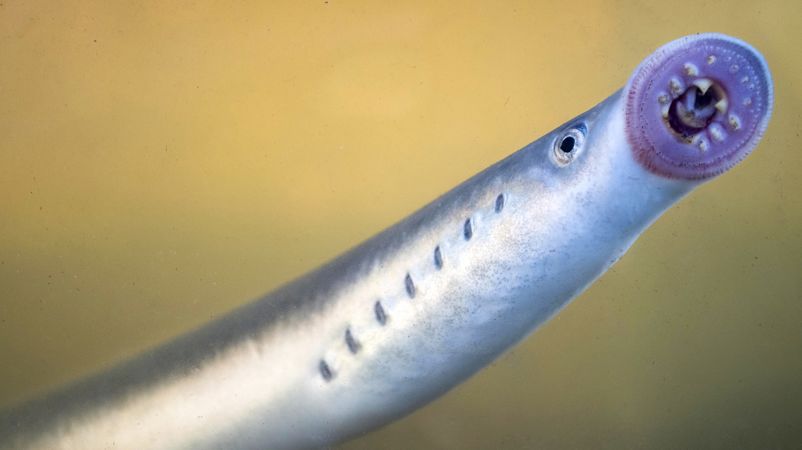Can you help to spot pre-historic fish in our rivers?

To mark Citizen Science month, Natural Resources Wales (NRW) is launching new resources designed to help the public spot and identify rare lamprey fish in our waters.
The new identification resources have been developed by NRW’s Four Rivers for LIFE project and describes the three different species of lamprey and how to tell them apart.
It also shows what their breeding areas look like, the time they spawn in different rivers and how to identify any potential impact from barriers and river habitat changes.
Lampreys are a pre-historic eel-like fish that have been around for nearly 400 million years. They have a disc-shaped, suction cup mouth ringed with sharp teeth, which they use to attach to their prey when feeding, or to move stones when building their redds (nests).
There are three species of lamprey; river, brook and sea, and all are found in the UK. Numbers have declined in recent years, and they are all now classed as a rare and protected species.
As with many of our freshwater species, the biggest threat to lamprey are habitat loss and pollution.
Soil and sediment eroding from land next to rivers can fill in gaps between cobbles and gravel at the bottom of our rivers, smothering the habitat that lamprey need to lay their eggs and preventing oxygen from reaching the eggs.
In addition, man-made structures like weirs and dams can hamper migration. Lamprey are not able to jump and instead will have to swim or ‘sucker’ their way over barriers. This slows them down and wastes valuable energy needed in their search for breeding areas further upstream.
Sophie Gott, Four Rivers for LIFE Monitoring Officer said: “Getting involved in citizen science projects like this is a wonderful way to support the scientific community and make a difference to the environment.”
She adds: “We are always looking for support to help fill in the gaps of our knowledge about lamprey. The data collected will be used to map the breeding areas as well as their range, it will also help us establish the time they breed in different rivers; and identify any potential impact from barriers and river habitat changes.”
Information about lampreys is limited in the UK. Some historic evidence on the range of sea lamprey is available, but little has been collected in recent years. The amount of information on river and brook lamprey breeding is also limited.
These new identification resources will help members of the public gather data that will in turn expand the knowledge base about lamprey and enable a better understanding about the species and how to protect them.
All data will be added to the National Biodiversity Network Database, the UK’s largest repository of publicly available biodiversity data.
To request the new lamprey identification resources please email 4RiversforLIFE@cyfoethnaturiolcymru.onmicrosoft.com
